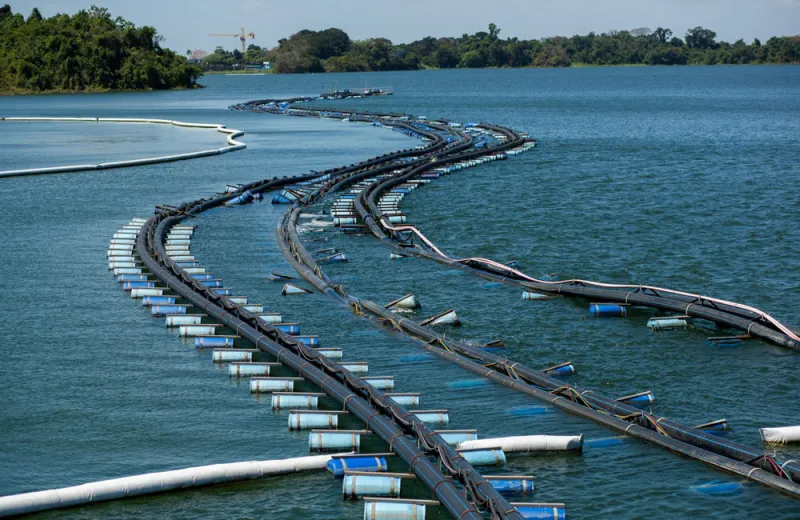The water industry may be as recession- and inflation-proof as it gets.
Even though he makes his living in the water business, Matthew Diserio, president and co-founder of Water Asset Management, made a good case for why water belongs in investors’ portfolios. He told Institutional Investor that the recession hedge comes from the perpetual and natural demand for water, which isn’t driven by fluctuations in gross domestic product.
“Think about yourself: You’re using water in your daily life whether GDP is up two or down two,” Diserio said. “It’s an essential expenditure.”
Water utility companies are regulated monopolies that are generally allowed to earn about a 10 percent return on equity. They have pricing power.
“Their businesses are as close to recession-proof as you can find,” he said. “So it’s a good time for the water industry now, especially relative to other industries that might have grown quicker when the economy was booming.”
Water Asset Management was founded in 2005 and invests in companies and assets that ensure water quality and supply. It has a team focused on publicly-listed water stocks and long-only investments, and a second group that shorts stocks that are at risk from drought, floods, wildfires, and pollution. Over the past 17 years, Diserio said the firm’s annualized net return has been over 10 percent.
When the firm first found its footing, Diserio said there was little investor awareness or interest in the water industry. “It's an industry that's characterized [by] some of the most positive long-duration, inflation-protected pricing power of any industry, and it's not well understood by many — [or] really most — investors,” Diserio said.
Will Sarni, founder of Water Foundry, a water strategy consulting firm, echoed Diserio’s position. “This is not a fad. This is a series of trends that position water to be a smart investment over a very long period of time,” Sarni told II. Two decades ago Sarni started a firm that provides sustainability strategies for large companies.
“We can’t survive three days without water. You can’t make a semiconductor chip without water. You can't make an automobile without water, or beer, vodka, or the food of your choice. So this is the most precious resource we have. And we have grossly mismanaged it,” he said.
Water investing is hardly a new phenomenon. Indexes like the Dow Jones U.S. Water Index and the S&P Global Water Index track the performance of water-related investments, and big names like Michael Burry — best known for predicting and shorting the crash of the mortgage market — started investing in water after 2008.
While interest in water clearly has been helped by the popularity of investing through an environmental, social, and governance lens, the benefits are somewhat surprising and not intuitive.
When it comes to ESG risks, water can play a unique and unexpected role in a portfolio. Todd Cort, senior lecturer of sustainability at the Yale School of Management, said that water has been the “poster child of covariant risk” for many years. Covariance measures the direct relationship between the returns on two or more assets. An investor’s goal is to reduce the covariance in their portfolio to promote steady growth over time. Ideally, when one sector tanks, the other sectors an investor has money in will outperform and balance out the losses.
Take three companies: a soda company, a cement company, and a chemical company. On the surface, these three companies — which operate in different sectors and manufacture their products in different parts of the world — have little to no covariant risk. By investing in these three companies, the investor should therefore reduce the volatility in their portfolio.
However, Cort argued that these three companies do in fact have covariant risk, because all three have a heavy dependence on water. “There’s this ESG factor that presents this covariant risk to my portfolio,” Cort said. “[As an investor,] if I was smart, I would take that covariant risk — water scarcity — and integrate it into my risk-return ratio.”
Water also benefits from being more quantifiable than many other more nuanced and less tangible ESG factors. The availability of water can be measured in gallons, and the salinity level (which determines the drinkability) of that water can also be measured. “Water delivers positive impact investing with very clear, definable metrics,” Diserio said.
Private equity firms have also increased their investments in water-related companies. Last week, Baird Capital, which has global private equity and U.S. venture capital, invested in UGSI Solutions, a provider of water quality management solutions and chemical feed systems to municipal water and wastewater utility markets.
Becca Schlagenhauf, v.p. of Baird Capital’s PE team, told II that the increase in investor interest in water is a product of tightening regulation around the water supply, an increase in public awareness about water issues, and increased attention toward ESG in general.
“Water is so broad there are many different ways and many different opportunities to invest in it,” Schlagenhauf said.
Cort noted that water investments may act as a safe haven through the upcoming market cycle, but he said it’s more complicated than water just being “recession proof.” If there is a recession, Cort said municipalities may “kick the can down the road,” pushing water infrastructure projects two or three years down the line in lieu of spending annual budget dollars on fixing the immediate impact of the economic downturn.
“But we’re not just in a recession,” Cort said. “We’re in a recession during a time of climate crisis.”







